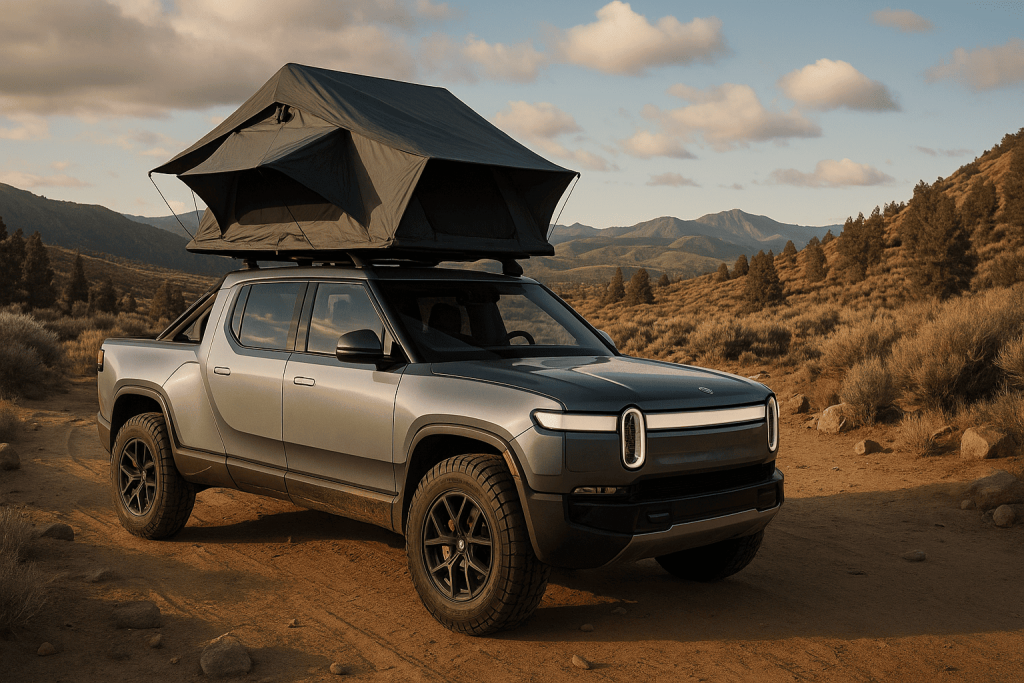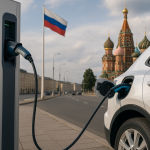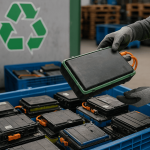Off-road travel—once the exclusive domain of rumbling diesel trucks and gasoline 4x4s—is undergoing a quiet but powerful transformation. As electric vehicles (EVs) grow more capable, a new frontier is opening up: electric overlanding. Combining sustainable travel with adventure, electric overlanding is no longer a far-fetched dream—it’s a rapidly evolving reality. From forest trails to desert dunes, early adopters and automakers are proving that EVs can handle the rugged outdoors while treading lightly on the planet.
The Rise of the Electric Trailblazer
Modern electric vehicles are shedding their city-only reputation. Thanks to torque-rich drivetrains, sophisticated software, and high ground clearance, several EV models are now trail-ready. Rivian’s R1T and R1S, GMC’s Hummer EV, and the Tesla Cybertruck are leading the charge with off-road features like independent air suspension, water fording capability, and drive modes for sand, snow, and rock. These EVs are built for dirt, dust, and distance—while remaining whisper-quiet and emissions-free.
Instant Torque, Precise Control
One of the most compelling reasons to take an EV off-road is torque. Electric motors deliver instant power to the wheels without delay or gear hunting, allowing for precise throttle control on tricky terrain. On steep inclines, deep mud, or loose gravel, this responsiveness translates into superior traction and driver confidence. Dual or quad motor configurations allow for advanced torque vectoring, keeping all four wheels firmly planted even when the trail gets technical.
Range Reality: Planning Your Off-Grid Route
Range anxiety remains a concern for overlanding in EVs—but it’s increasingly manageable. Most trail-capable EVs now offer 300–500 km of real-world range. With careful route planning, auxiliary solar panels, and portable battery units, explorers can recharge far from civilization. Companies like EcoFlow, Goal Zero, and Bluetti provide solar generator systems that can extend adventure times by topping up battery packs via foldable solar panels. Meanwhile, new navigation apps like PlugShare and A Better Routeplanner (ABRP) offer real-time access to charging points—even in remote areas.
Charging in the Wild
Wilderness charging presents one of the biggest challenges for EV overlanding—but also a unique opportunity for innovation. Some explorers equip their rigs with roof-mounted solar arrays or towable solar trailers. Others rely on hybrid support vehicles or install Level 2 chargers at base camps powered by generators or renewable systems. In the future, mobile charging trucks and peer-to-peer EV support networks may emerge, helping overlanders recharge in national parks, deserts, and mountain passes.
Silence in Nature, Not Emissions
One of the most immediate and immersive benefits of electric overlanding is silence. Without engine noise, explorers hear birdsong, wind, and rushing streams instead of diesel roar. It creates a deeper connection with nature—one that’s reinforced by the knowledge that your vehicle is not spewing emissions into the ecosystem. For conservation-minded adventurers, EVs represent a more respectful way to roam.
Weight and Recovery Considerations
Off-road EVs are often heavy due to battery packs, which can pose challenges in soft sand or deep snow. Recovery equipment—like traction boards, winches, and air compressors—remains essential. While EVs may not yet match the range and refueling speed of internal combustion overlanders, they often outperform them in control and climbing ability. Lighter EVs like the Ford F-150 Lightning or Subaru’s Solterra may offer a compromise between weight and capability.
Software-Defined Adventures
Electric overlanding isn’t just about hardware. Software plays a vital role in optimizing power usage, regenerative braking, terrain mapping, and vehicle diagnostics. Over-the-air (OTA) updates continuously improve performance and introduce new features—like Rivian’s “Camp Mode,” which levels the suspension for sleeping or powers campsite appliances via onboard outlets. These digital capabilities elevate off-road travel into the future.
EV-Specific Gear and Modifications
The aftermarket for electric overlanding is booming. New roof racks, modular storage solutions, battery-integrated fridges, and lightweight accessories are tailored for EVs. Since roof-mounted tents and extra weight impact range more than they do in ICE vehicles, the market is responding with aerodynamic, lightweight, and energy-efficient gear. Even all-terrain tires are being redesigned to reduce rolling resistance without sacrificing grip.
Eco-Tourism and Protected Land Access
As governments and parks around the world restrict access to sensitive environments, EVs may gain a competitive edge. Quiet, clean vehicles could soon be the only type allowed in certain ecotourism zones or national parks. Already, some conservation organizations partner with EV owners to conduct low-impact field research and wildlife observation expeditions. The synergy between sustainability and exploration is creating new roles for EVs far beyond recreation.
Conclusion
Electric overlanding is more than a trend—it’s a statement. It signals that the spirit of adventure can evolve without sacrificing environmental values. While limitations remain, the pace of innovation in EV range, charging, and off-road capabilities is rapidly erasing old boundaries. For those who crave wild trails and distant horizons, the electric future is not a compromise—it’s a clean, silent, and thrilling invitation to roam differently. The dirt roads are waiting—and they’ve never been quieter.



EV overlanding is lit 👍👍 but range sucks
Ya you ain gonna make it to no desert in that… 😪😪
evs off-road? nah, sounds sus torque’s cool but range? stuck in mud, no juice lol😁
Dey knows how to make the motors, but i aint drivin it where theres no roads